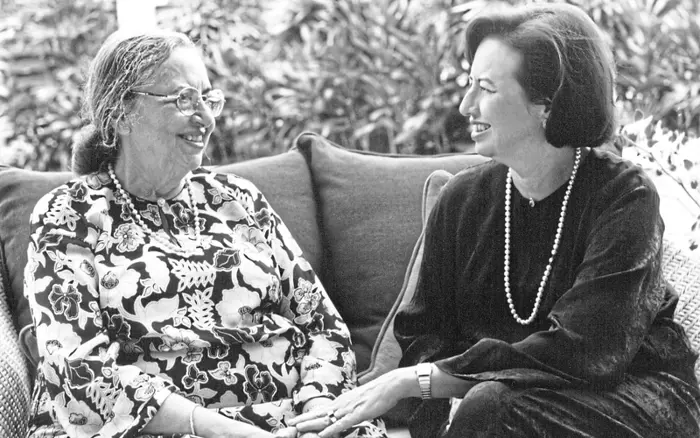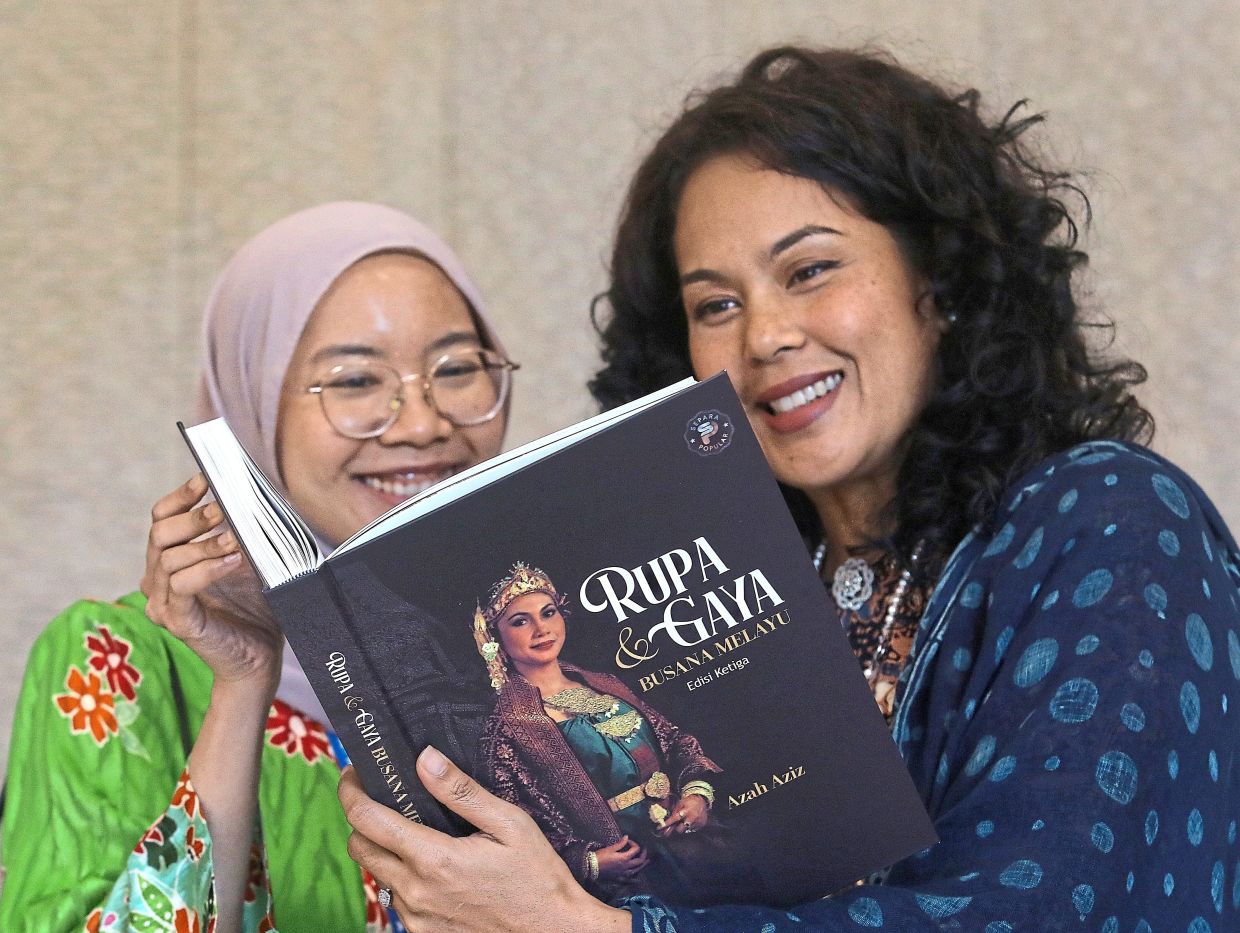ANN/THE STAR – The preservation of cultural heritage often rests in the hands of dedicated individuals whose passion and scholarship ensure that traditions remain alive for future generations.
Among them was the late Azah Aziz (1928–2012), a renowned cultural custodian, journalist, and historian whose work on Malay textiles and costumes remains unparalleled.
To continue her legacy, her daughter, former Bank Negara governor Tan Sri Dr Zeti Akhtar Aziz, has launched Malay Textiles And Costumes: Form And Style, an English edition of Azah’s seminal book, Rupa Dan Gaya: Busana Melayu.
Held at Sasana Kijang, Bank Negara Malaysia, the book launch was hosted by Tita Publications in collaboration with Penerbit UKM, Universiti Kebangsaan Malaysia.
This event also marked the release of the third edition of the original Rupa Dan Gaya, reaffirming its status as a cornerstone of Malay textile literature.

Preserving the Threads of Tradition
First published in 2006, Rupa Dan Gaya was the magnum opus of Azah Aziz, a lifelong advocate for Malay heritage. Her research captured the aesthetic, historical, and social dimensions of traditional Malay attire, providing an invaluable reference for designers, educators, and cultural preservationists.
Beyond its scholarly value, her work was a labour of love—one that celebrated the artistry of textiles and their role in Malay identity.
Azah’s meticulous documentation explored the craftsmanship behind fabrics such as tenun and batik, as well as the significance of iconic garments like the baju kurung and baju melayu.
Her extensive writings ensured that these traditions, often overlooked in the modern world, would continue to be studied and appreciated.
“My mother’s research ignited a passion for cultural preservation in many individuals,” said Zeti during the launch event. “Her dedication to chronicling our rich textile traditions has laid the foundation for future generations to understand and appreciate our heritage.”
A Labour of Love in Translation
Since 2014, Zeti has spearheaded the effort to bring her mother’s work to a broader audience through translation.
Malay Textiles And Costumes: Form And Style is not merely an English version of Rupa Dan Gaya but an intricate reinterpretation that retains the essence and depth of the original text.
“Translating this book was a challenge, particularly with terminology that has no direct English equivalent,” Zeti explained. “For instance, ‘telepuk’ was one such word—we ultimately chose ‘gilded’ to describe its rich metallic patterns.”
To bridge the gap for international readers, a comprehensive glossary has been included, offering clear explanations of Malay textile terms.
This ensures that the book remains accessible to scholars, museum curators, and textile enthusiasts worldwide while maintaining the authenticity of the cultural lexicon.

A New Chapter for Cultural Heritage
The launch of the English edition was not the only highlight of the event. Guests were also given an exclusive preview of the upcoming Merdeka Textile Museum, set to open at Merdeka 118 in Kuala Lumpur in early 2026.
This groundbreaking museum will be the first of its kind in Asia, showcasing over 240 textiles and costumes, alongside 69 pieces of jewellery once owned by Azah.
Her extensive research and writings will play a key role in shaping the museum’s curatorial direction.
Equipped with state-of-the-art technology such as interactive media, motion sensors, and intelligent lighting, the museum promises an immersive experience that brings Malay textile traditions to life.
More than just a repository of artefacts, it will serve as a living tribute to Azah’s lifelong work in preserving cultural heritage.
“PNB is deeply honoured to be the custodian of Puan Azah Aziz’s extraordinary collection,” said Raja Tan Sri Arshad Raja Tun Uda, group chairman of Permodalan Nasional Berhad (PNB), the institution spearheading the project.
“Her personal collection of over 200 exquisite pieces—ranging from sarung songket to baju kurung limar and tekat emas—embodies the very best of Malay craftsmanship, preserving not just textiles but the soul of our cultural identity.”
As Malay Textiles And Costumes: Form And Style finds its place on bookshelves worldwide, and as the Merdeka Textile Museum prepares to open its doors, Azah Aziz’s legacy continues to shape and inspire the appreciation of Malay heritage.
Her lifelong dedication to documenting and preserving these traditions ensures that the threads of history remain unbroken, woven into the fabric of generations to come.



